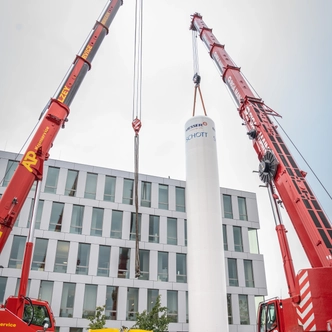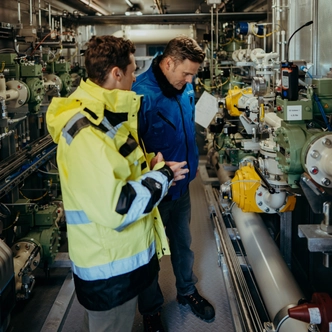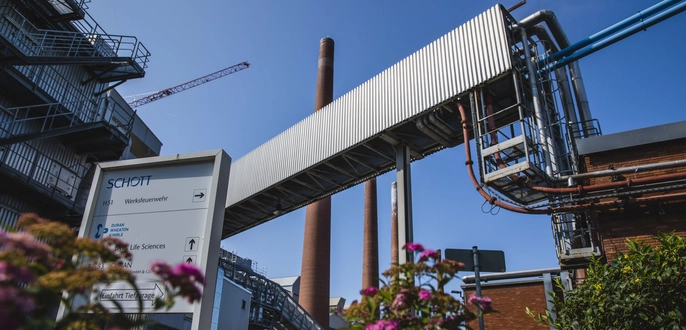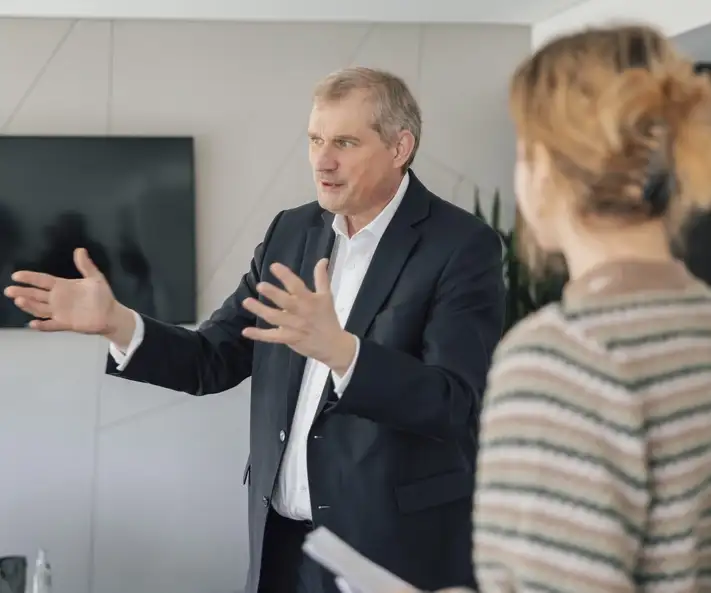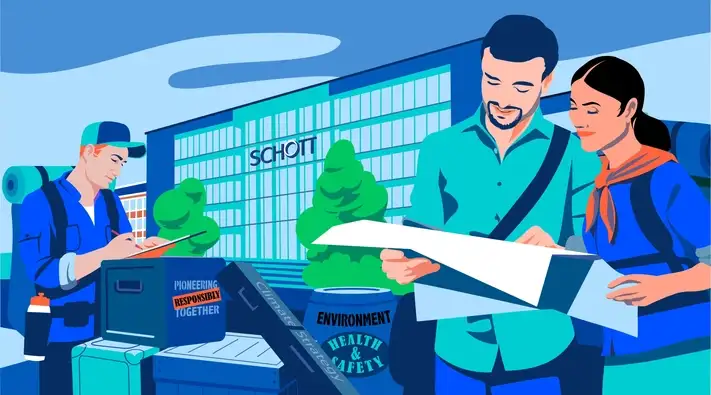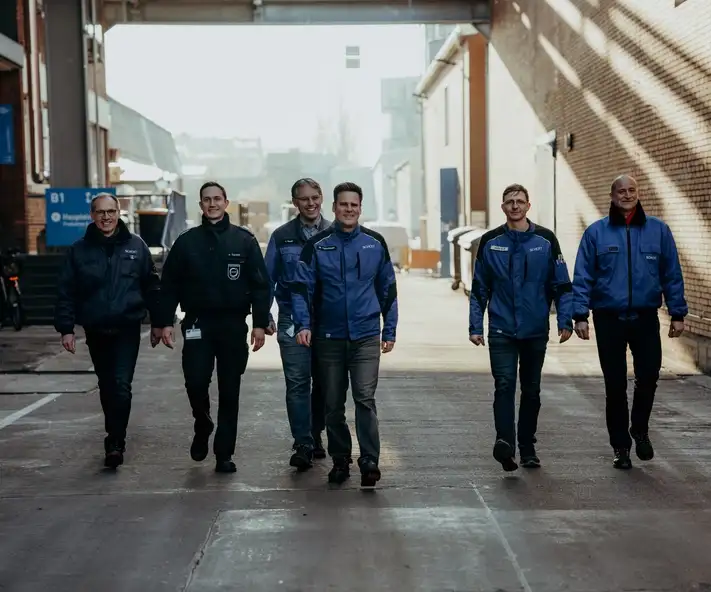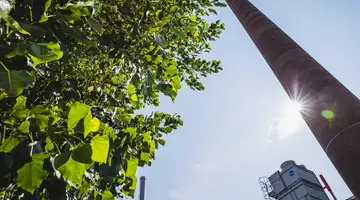
Taking on the challenge of a lifetime
Transforming the economy towards carbon neutrality is inevitable. Nevertheless, it will be a long, challenging road requiring entrepreneurial courage and stamina.
SCHOTT CFO Dr. Jens Schulte comments on the company's climate goals and challenges.
- SCHOTT plan to make its energy-intensive glass production climate neutral by 2030.
- Electrification and hydrogen technology are key to reducing emissions, along with digitalization and renewable energy.
- Close cooperation between policymakers and industries is crucial for successful transformation. Transforming glass production leads to energy-efficient processes and innovative, climate-friendly products.
I invite you to take a few seconds and imagine a world without specialty glass. Our modern world would look and feel much emptier, wouldn’t it?
There would be no safely packaged medication, no smartphones, no microscopes for scientists, no telescopes to look deep into the universe. There would be no nanolithography to ensure process precision in semiconductor production. Without glass, we would not have such powerful computer chips.
Specialty glass enables fascinating solutions that other materials simply cannot provide. In fact, there is hardly a field of technology, whether it is electronics, the automotive industry, or biomedicine, that would be possible without it.
When people ask me about glass, I tell them that it is one of the oldest materials known to us, yet we have only scratched the surface of its possibilities. Glass also plays a significant role in achieving climate policy goals. For example, solar glasses and glass fibers strengthen the rotors in wind turbines. Therefore, without glass, the energy transition would not even be possible.
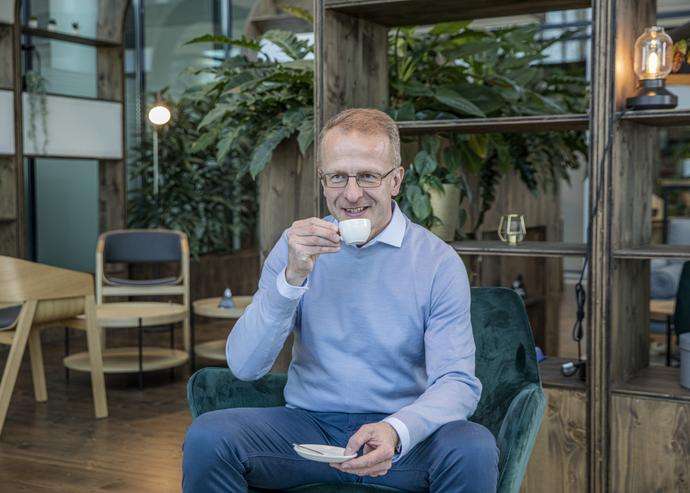
Committed to becoming climate neutral by 2030: SCHOTT CFO Dr. Jens Schulte manages the company’s climate initiatives.
Producing glass takes a lot of energy
Even as glass has helped us achieve many milestones, it still requires a very energy-intensive process. As a primary material at the beginning of the value chain, glass is similar to the cement, lime, steel, and chemical industries in its production process. Glass production requires temperatures up 1700 °C to melt raw materials in huge melting tanks the size of large swimming pools.
The melting process is continuous and runs 24 hours a day, 365 days a year, for up to ten years.You can’t just switch it off because the glass melt reacts to even minor temperature differences. Even if the energy supply is reduced only for a short period, glass can solidify and destroy a tank.
Today, natural gas is mainly used to heat melting tanks. This, in turn, produces high carbon emissions, 80 percent of which come from the combustion of natural gas.
A change must come
This must change, though, because the shift in the global climate represents the greatest challenge of our time. We all have to take responsibility in tackling this challenge: Companies, society, and politicians. Achieving the overall goal of decarbonization requires massive changes across entire industries. Due to its energy intensity, the glass industry clearly has a special responsibility in working towards this goal. In the long term, it must move away from fossil fuels and thus reduce its emissions.
SCHOTT, as a globaly-infuential specialty glass manufacturer, has set a clear goal: We are the first company in our industry to become climate neutral in its production by 2030 (based on Greenhouse Gas Protocol scope 1+2). This is a very ambitious journey with many unanswered questions. I am firmly convinced, however, that this journey is the right one. Society needs more institutions that set ambitious and challenging goals to lead the way in their industries.
It is clear that if the glass manufacturing process is to become climate-neutral, we must replace natural gas with alternative energy sources. When considering all aspects of how we can achieve this climate-neutral energy turnaround, technology change might be the most significant challenge for the global industry.
At SCHOTT, the biggest challenge is to transform the entire production process. This requires a massive change in the way we produce glass. In the long term, we want to abandon the use of fossil fuels wherever technologically possible. Therefore, in developing new technologies, we focus on the most energy-intensive process step of glass melting. Here, we concentrate on two main transformation paths: electrification and hydrogen technology. Electricity from renewable energies plays a crucial role in both approaches.
The path to carbon neutrality is greatly accelerated by another megatrend of our time: digitalization. We already rely on artificial intelligence and Big Data solutions to make the melting process more efficient. Thanks to new sensors and technologies, mass data recorded at the melting tanks can be better structured, analyzed automatically, and used to achieve process improvements. As a result, process engineers and technicians can recognize the complex interactions more quickly and intervene in a more targeted manner. This will lead to an improvement in process stability and higher yield – in short, to further increase efficiency.
We can only succeed together
I am convinced that this transformation can be successful. Initial R&D results at SCHOTT are already quite promising. Nevertheless, we can only achieve actual change through close cooperation between policymakers and industries. The challenge of transforming the entire industry is far too great to master alone.
What framework conditions are necessary for a successful transformation of industrial production in Germany? And how can climate protection and competitiveness be combined?
In my opinion, the following five points need to change:
First, funding support throughout the journey:
We need strong research funding to develop new, climate-friendly technologies. The industry needs subsidy programs to bear the high investment costs that arise during technological change. In addition to funding for research and investments, we also need support for the additional costs incurred by using alternative energy sources, such as green electricity.
Second, expedited permit and funding procedures:
Approval procedures will be a significant hurdle. This applies to the glass industry and to the development and expansion of the energy supply with renewable energies in general. Unfortunately, many approval and funding procedures take a very long time. This needs to change.
Third, availability of green energy sources:
The availability of green energy sources must be expanded. Besides green electricity, green hydrogen and bio-energy – as a bridging technology – are particularly needed. The glass industry needs to have a reliable, continuous, and uninterrupted supply of green energy. This also requires efficient transmission and distribution networks.
Fourth, competitive prices:
Alternative energy sources must be available in sufficient quantities, and at competitive prices.
Fifth, a national energy strategy:
As we have painfully experienced last year, all of this needs to be embedded in a more strategic policy view on energy supply in Germany and Europe. In addition to defining the right energy mix, this also needs to address where energy supply is coming from, what our strategic dependencies are today, and what they will be in the future.
For thousands of years, glass has made so many different products and advanced technologies possible. Now it is up to our industry to funnel the wealth of knowledge into transforming our own production processes. By making them far more energy-efficient and climate friendly, our industry is preparing itself for a much greater level of innovation and exciting new products we cannot even imagine today. At SCHOTT, we understand that achieving climate neutrality will not be easy. It will require clear goals, determination, our own investments, and a lot of hard work.However, we believe that we are all responsible for safeguarding our planet for the future and need do everything in our power to stop climate change for the benefit of future generations.
This text first appeared in "The Stern Stewart Periodical".



